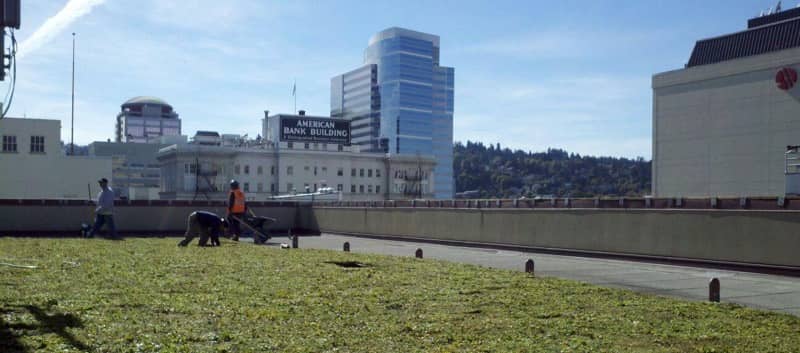 Green roofs are great additions to your building in regards to improving stormwater management and creating unique aesthetics. However, they can also be viewed as a safe haven by a number of pests. Just like any other green space, animals and insects will inevitably flock to your new roof. Implementing a pest control system can help you avoid creating a space overrun with wildlife. The following tips should be considered prior to installing a green roofing system and implementing a pest management plan.
Green roofs are great additions to your building in regards to improving stormwater management and creating unique aesthetics. However, they can also be viewed as a safe haven by a number of pests. Just like any other green space, animals and insects will inevitably flock to your new roof. Implementing a pest control system can help you avoid creating a space overrun with wildlife. The following tips should be considered prior to installing a green roofing system and implementing a pest management plan.
Identify the Type of Pests Attracted to Your Roof
Pests will begin to infiltrate the plants on your roofing system as soon as they are planted. However, pests vary from location to location, so it is important to identify typical types prior to installation in order to identify the best ways to avoid them.
Generally, insects such as spiders, ants, mosquitoes and hornets/wasps are the most common pests to inhabit green roofing systems. Other unwanted guests can include:
- Birds
- Mice
- Rats
- Raccoons
- Cockroaches
- Beetles
- Termites
Your vegetated roof is an ecosystem, so the presence of one group of pests may increase the presence of another, i.e. insects result in birds. You can manage your roof’s residents however, so don’t be dissuaded from installing a green roof because of the presence of some critters.
What Risks Do They Possess?
Pests may pose a risk to both your occupants and your building itself depending on how malicious they are. Animals could burrow their way through your roof and find themselves in the interior of your building. Other than compromising your building from a structural standpoint, these pests are creating an unfavorable environment for employees and visitors.
Obviously, the presence of some pests in your building have a more significant impact than others. Cockroaches are not nearly as alarming to occupants as the sight of mice and rats. Be cognizant of the pests that have made hives or nests on your rooftop as well - could a bite or sting from one of them seriously injure someone? If so, it’s best to remove them as soon as possible.
Do Inspections
Chances are, you already have an inspection routine set up for your building regarding pests. Expand your inspection plan to include your roofing system, generally the same methods can be used for landscaping can be applied. Some common signs of pests include:
- Animal droppings
- Nests and hives
- Burrows
- Damage to foliage
- Tracks
The frequency of inspections will vary based on the size and type of green roofing system installed. A rule of thumb to follow - the bigger the roof, the more frequent the inspections.
Be Proactive With Your Plan
It’s hard to get rid of an abundance of pests once they’ve already moved in to your roofing system. There are a number of preventative measures you can take however, at the inception of your roof, that will dissuade these critters from staying. Work with plant specialists to determine what foliage is less likely to attract pests common in your area, rather than picking your plants at random.
Healthy plants are less likely to attract insect residents, so be sure to properly maintain your vegetated roof. Don’t overwater though! Ponding water is a breeding ground for mosquitoes and other unfavorable bugs, so be sure your irrigation levels are set appropriately.
Pesticides can be used in limited quantities if preventative measures aren’t giving you the results you desire. Be mindful of chemical levels - your roofing is part of a stormwater management system and adding chemicals to the water can end up polluting the water sources around your building / community.
What other methods do you use to manage the pests occupying your green roofing system? Tell us about it in the comments.
-1.png?width=500&height=271&name=FiberTite_Only%20(500px%20wide)-1.png)


-1.png)